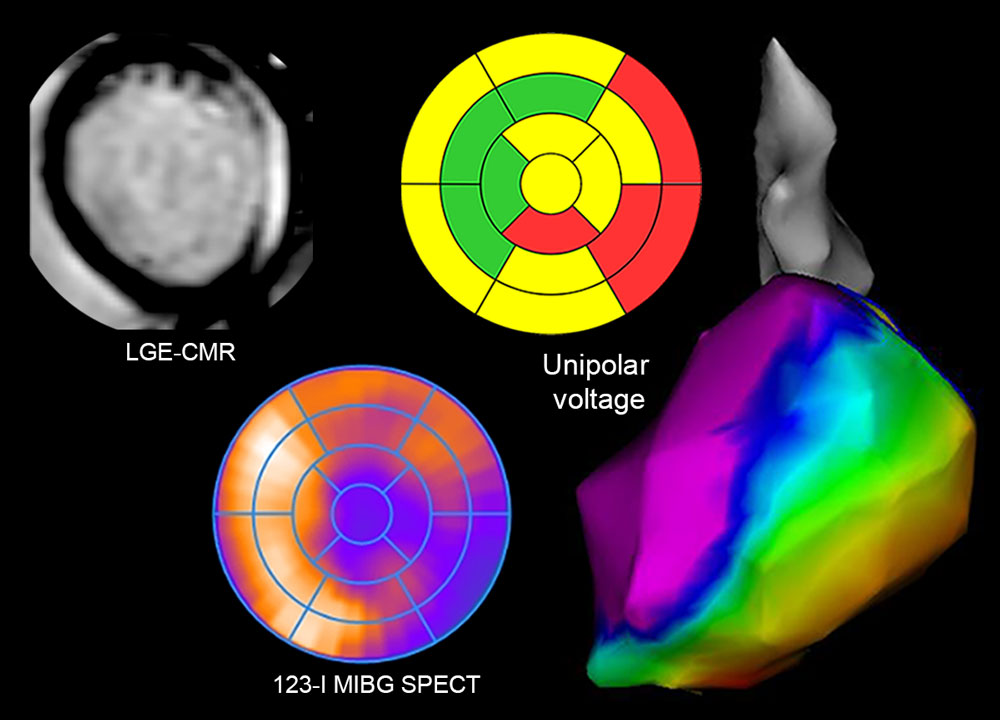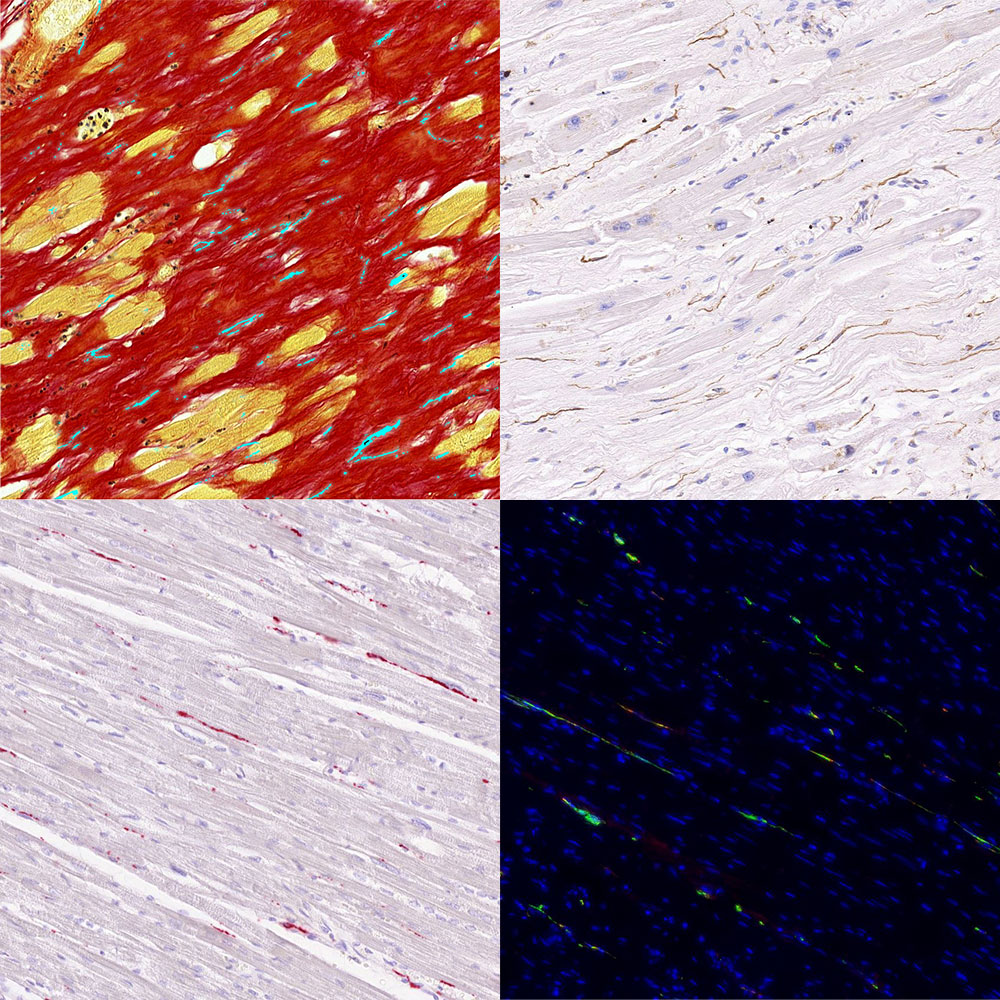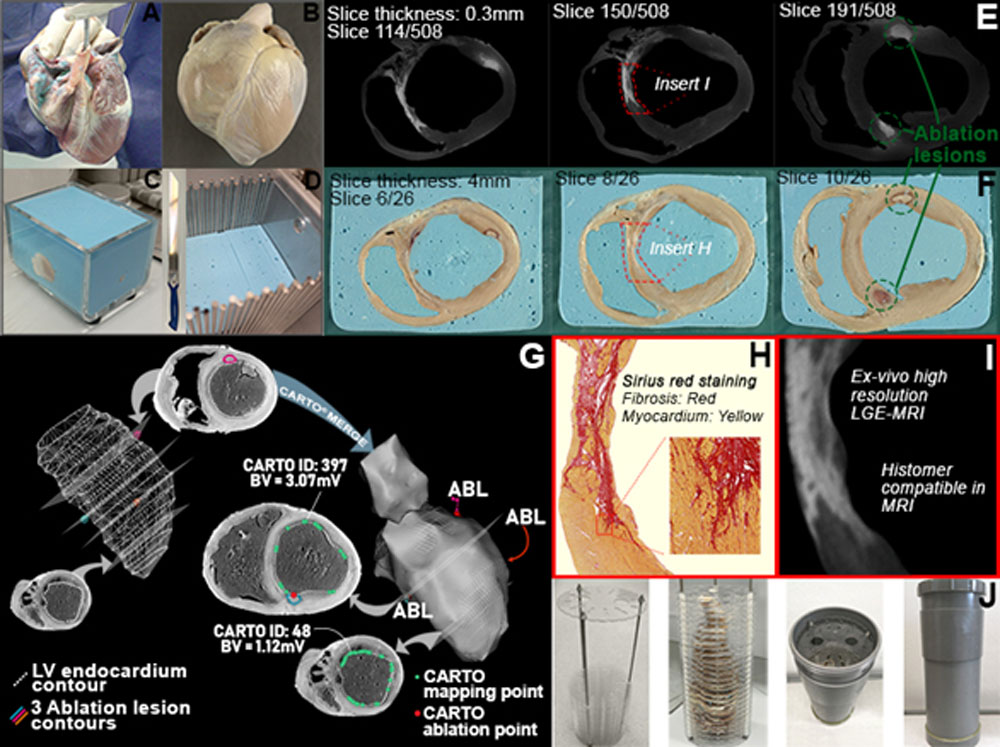Patients with non-ischemic cardiomyopathies are at risk for life-threatening ventricular arrhythmias. Understanding the underlying substrate is the key to developing successful treatment and individualized risk stratification. Over the last decade our research group has provided important insights.
Projects
Prospective Leiden NICM registry
The Leiden Nonischemic Cardiomyopathy Study is a single-center prospective cohort study designed to identify NICM patients at risk for ventricular arrhythmias. Patients undergo a comprehensive evaluation including a 24-hour Holter, transthoracic echocardiography, LGE-CMR, exercise testing, blood sampling, invasive EPS, endomyocardial biopsy, and genetic analysis. Clinicaltrials.gov identifier: NCT01940081.
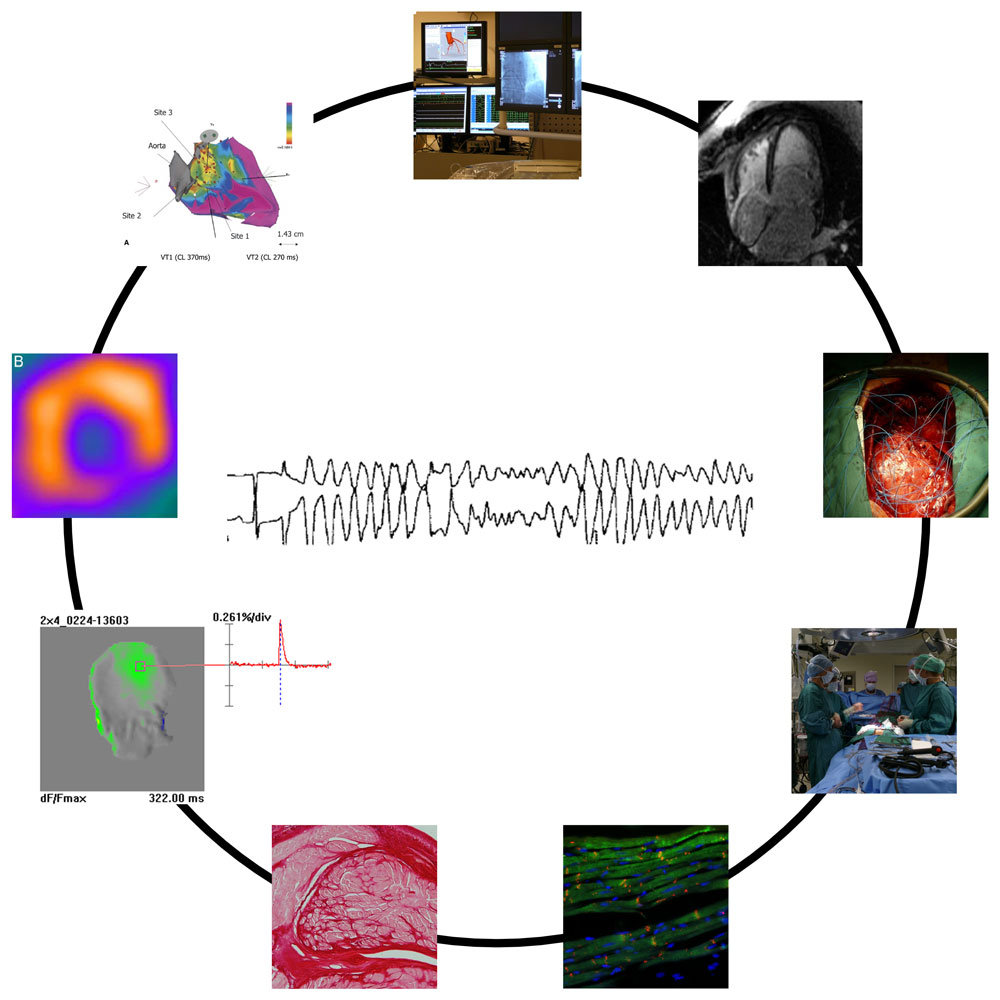
Comparing full heart histology, in-vivo and ex-vivo imaging and in-vivo electrophysiology data
Risk stratification (awUV mapping project)
Unipolar electroanatomical voltage mapping correlates with fibrosis and can also detect fibrosis not evident on LGE-CMR. We have developed a new parameter, the area and volume weighted UV, as a measure that reflects the total amount of remaining viable myocardium, which identifies patients at risk of rapid deterioration of cardiac function and end-stage HF. The predictive value is under evaluation.
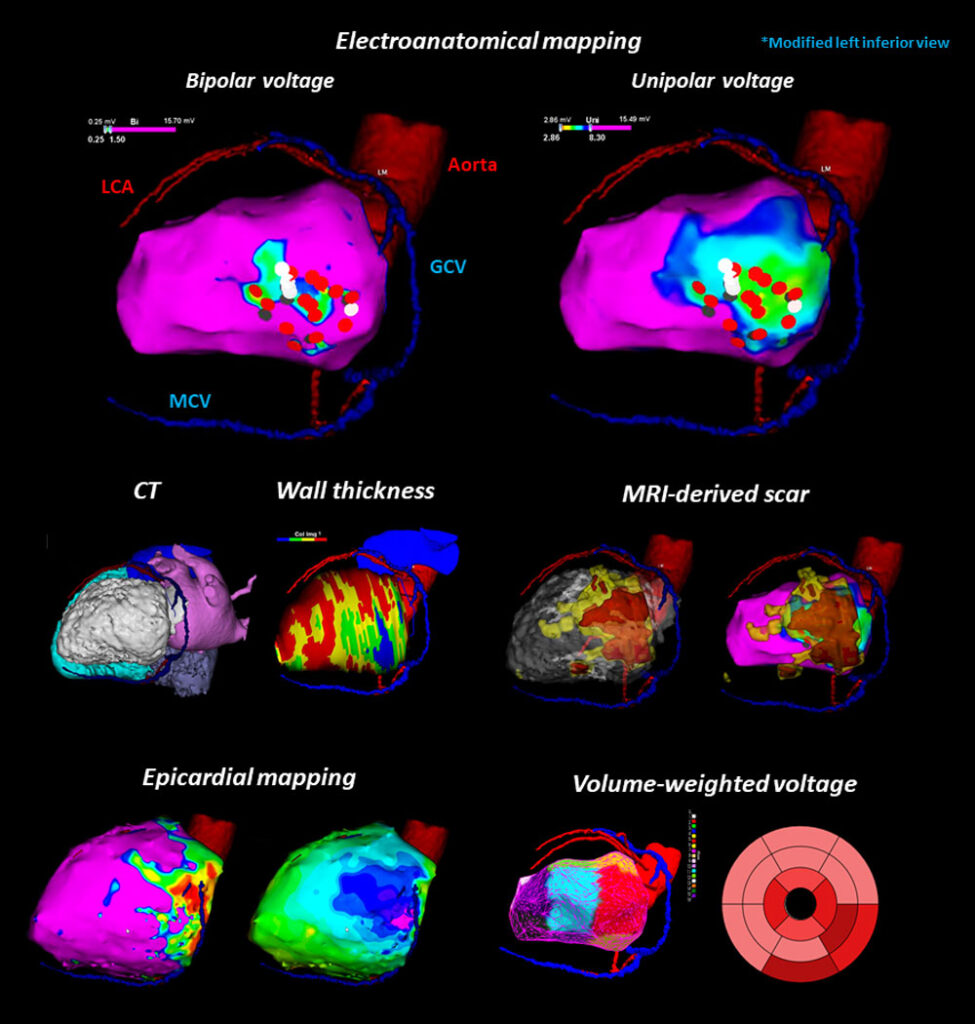
Cardiac innervation
Sympathetic denervation is known to be an important determinant of arrhythmogenicity. In order to study ventricular arrhythmia substrates that are difficult to control by radiofrequency catheter ablation, this project focuses on the relation between cardiac sympathetic innervation and myocardial fibrosis.
